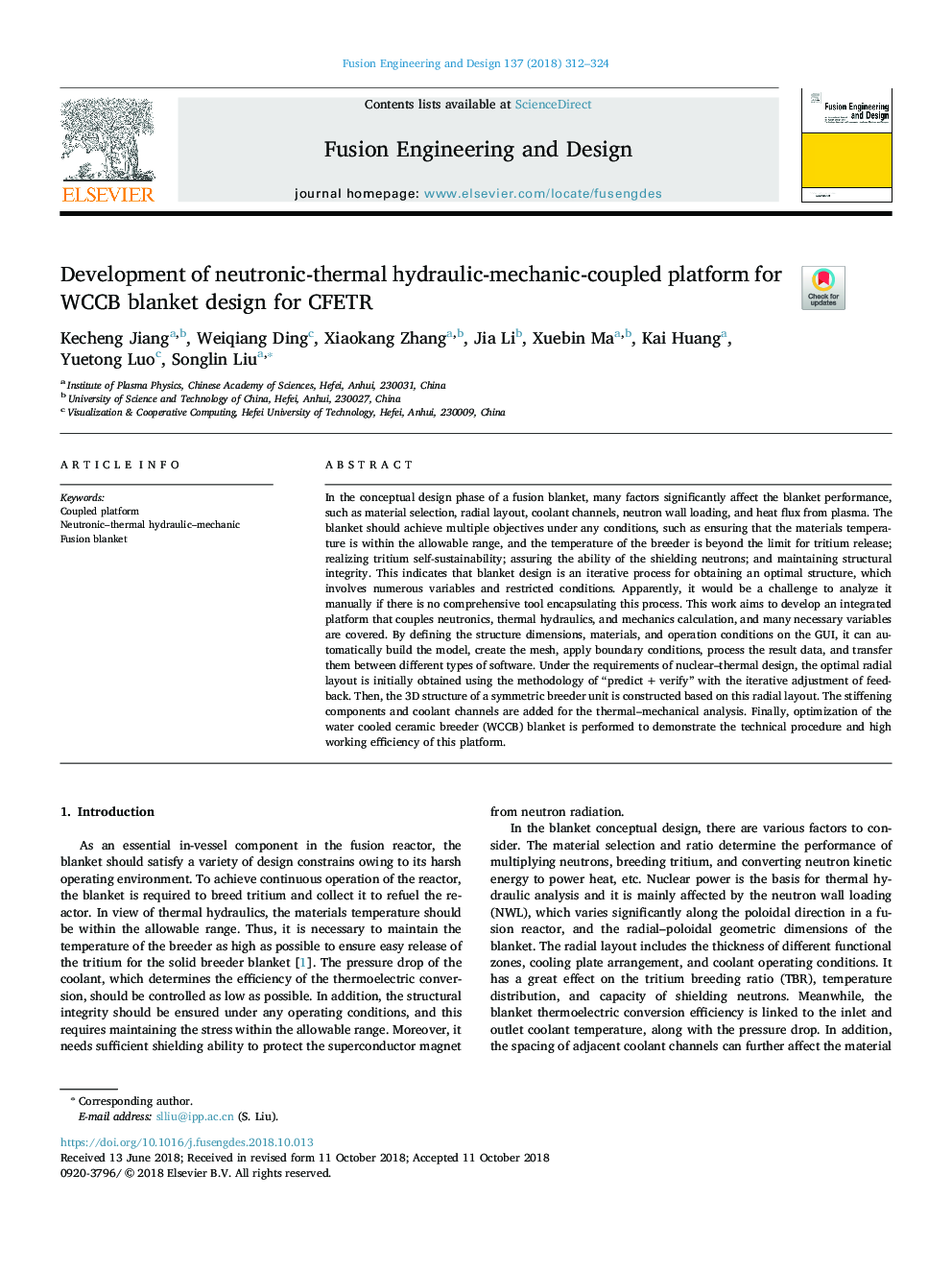| Article ID | Journal | Published Year | Pages | File Type |
|---|---|---|---|---|
| 11580872 | Fusion Engineering and Design | 2018 | 13 Pages |
Abstract
In the conceptual design phase of a fusion blanket, many factors significantly affect the blanket performance, such as material selection, radial layout, coolant channels, neutron wall loading, and heat flux from plasma. The blanket should achieve multiple objectives under any conditions, such as ensuring that the materials temperature is within the allowable range, and the temperature of the breeder is beyond the limit for tritium release; realizing tritium self-sustainability; assuring the ability of the shielding neutrons; and maintaining structural integrity. This indicates that blanket design is an iterative process for obtaining an optimal structure, which involves numerous variables and restricted conditions. Apparently, it would be a challenge to analyze it manually if there is no comprehensive tool encapsulating this process. This work aims to develop an integrated platform that couples neutronics, thermal hydraulics, and mechanics calculation, and many necessary variables are covered. By defining the structure dimensions, materials, and operation conditions on the GUI, it can automatically build the model, create the mesh, apply boundary conditions, process the result data, and transfer them between different types of software. Under the requirements of nuclear-thermal design, the optimal radial layout is initially obtained using the methodology of “predictâ+âverify” with the iterative adjustment of feedback. Then, the 3D structure of a symmetric breeder unit is constructed based on this radial layout. The stiffening components and coolant channels are added for the thermal-mechanical analysis. Finally, optimization of the water cooled ceramic breeder (WCCB) blanket is performed to demonstrate the technical procedure and high working efficiency of this platform.
Keywords
Related Topics
Physical Sciences and Engineering
Energy
Energy Engineering and Power Technology
Authors
Kecheng Jiang, Weiqiang Ding, Xiaokang Zhang, Jia Li, Xuebin Ma, Kai Huang, Yuetong Luo, Songlin Liu,
